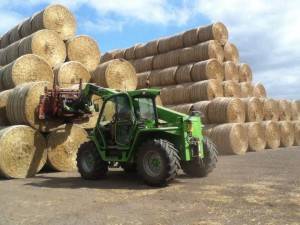FARMWISE HSE: The farm owner, and anyone employed to manage it, is responsible for the health and safety of the workers.
This also includes everyone that gets affected by the actions of all farm employees. Thus, the person in charge must:
- Carry out a risk assessment relating to the farm.
- Manage all risks found and do the best to protect everyone from harm.
- Set standards that ensure health and safety practices get adhered to.
- Carry out regular inspections and monitoring to ensure standards get maintained.
Having the responsibilities for farm vehicles and machinery equipment means you must also:
- Make sure they are safe to use for their intended activities.
- Ensure they are appropriate to perform the required tasks.
- Reduce their safety risks as low as possible and whenever practicable.
Farm Health and Safety Risk Assessment
The Health and Safety Executive (HSE) publishes extra guidance for farmers. It explains the steps for farms to conduct a health and safety risk assessment.
Note: The ‘Farmwise Guide‘ has more specific details on health and safety for farm vehicles and machinery.
Buying Farm Vehicles and Farming Equipment
The CE Mark
 As a rule, when buying new machines, vehicles, or pieces of farming equipment, they must be ‘CE‘ marked. CE stands for ‘Conformite Europeene‘. Equipment stamped with this mark gets built to the minimum allowable legal safety requirements.
As a rule, when buying new machines, vehicles, or pieces of farming equipment, they must be ‘CE‘ marked. CE stands for ‘Conformite Europeene‘. Equipment stamped with this mark gets built to the minimum allowable legal safety requirements.
While the ‘minimum’ level might sound worrying, note that EU rules are among the strictest in the world.
The majority of new pieces of equipment and farming machines have:
- The ‘declaration of conformity’ showing it meets EU standards.
- An instruction manual.
- Information on the noise levels emitted by the equipment.
Using Second-hand Farm Vehicles Equipment
After buying any second hand farm machinery you must:
- Ensure it complies with the Provision and Use of Work Equipment Regulations 1998 (PUWER).
- Have an operator’s manual or suitable instructions for use. Many operator manuals can now be download from the Internet.
- Repair or replace all damaged or missing safety guards before using the equipment or machinery.
Note: Another section explains what licence entitlements you need when learning to drive a tractor or specialist vehicle. Extra information covers minimum age limits and the special rules for test vehicles.
Maintaining Farm Vehicles and Equipment
You are responsible for all the equipment you own and use. It must be ‘properly’ maintained and used in good working order. You must carry out regular maintenance checks on all farm vehicles and machinery.
Note: This will lengthen the lifetime usage of the equipment besides meeting the required standards.
Check out the British Agricultural and Garden Machinery Association website. It has useful information on farming business rules and equipment maintenance checklists.
The Department of Transport (DoT) have guidance notes on how to perform health checks on farm equipment. The HSE website has information on the safe use of agricultural machinery.
Legal Noise Level on Farms
If a machine gives off a high level of noise it can cause damage to normal hearing. Under the law, you are responsible to assess the noise level where you and your employees work. If the noise level exceeds legal levels you must take action.
HSE consider the upper limit of safety to be 140db (decibel). But, this is the highest limit and for only short bursts. A constant level of 85db gets recognised as being a dangerous noise level for farm machinery.
Any time you have high levels of noise from equipment or machinery you should consider:
- Providing earplugs or earmuffs for all machine operators on the farm.
- The use of barriers, screens, or materials to block or absorb the sound in large enclosed areas.
- Set working time limits in excessive high noise areas.
As a rule, all employers must meet their legal responsibilities on Health and Safety at Work. The HSE has more specific information on noise levels in an agricultural environment.

